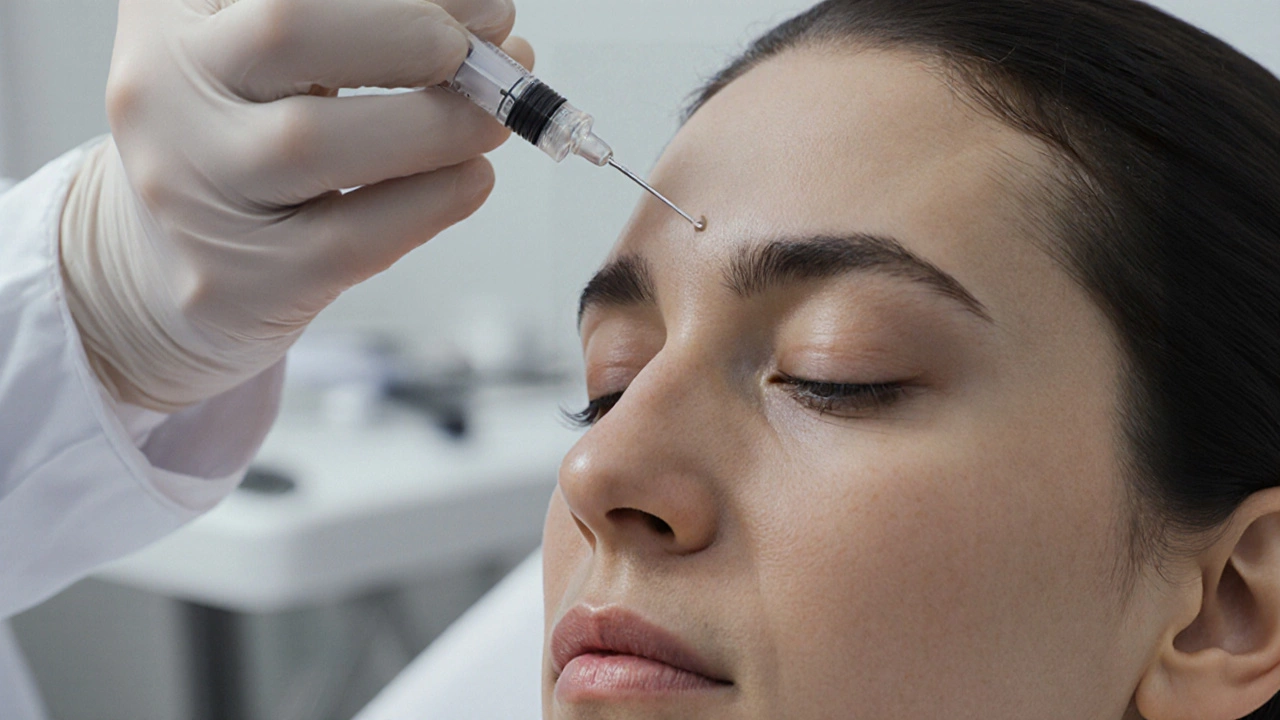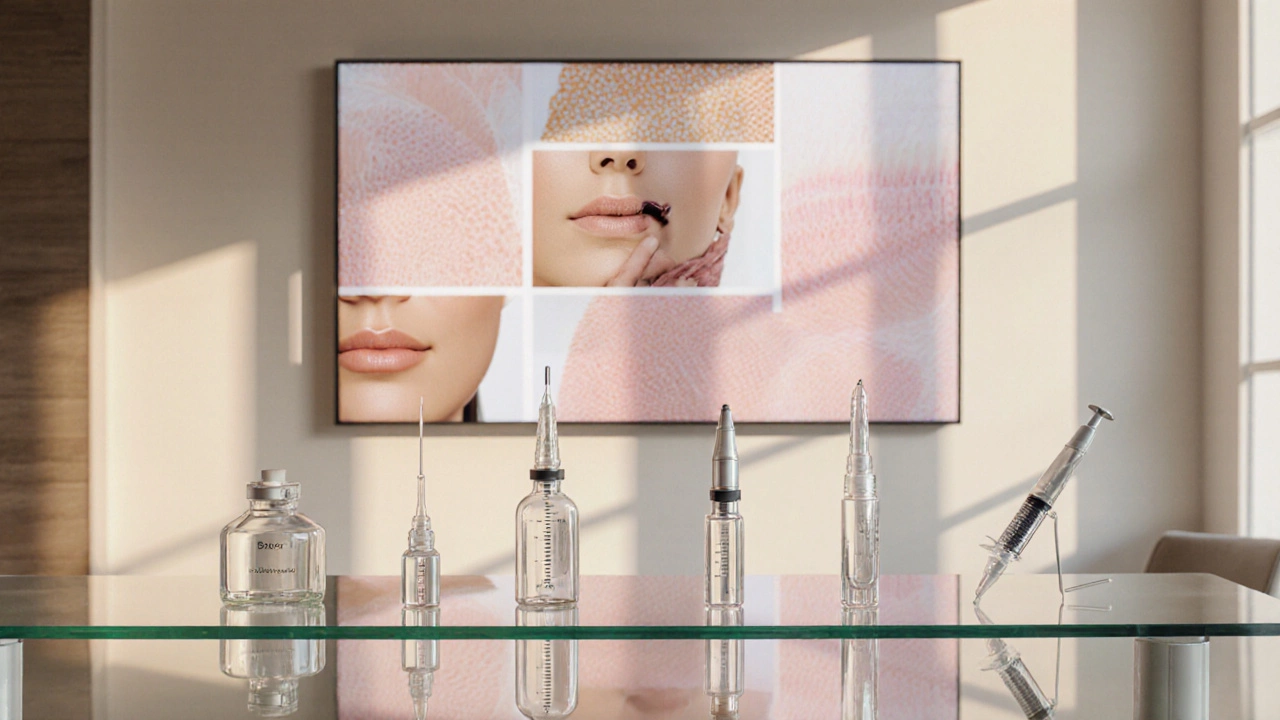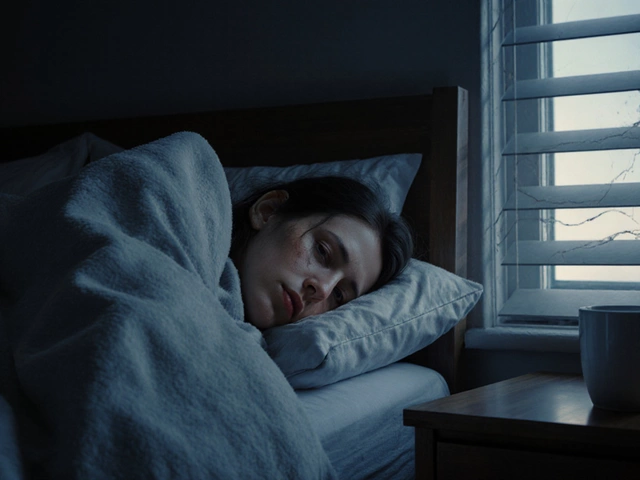When you hear "skin treatment," you probably picture a quick fix for acne, wrinkles, or uneven tone. But which procedure actually tops the popularity charts in 2025? Below we break down the data, the reasons behind the hype, and how to pick the right option for your own skin goals.
Key Takeaways
- Botox, chemical peels, laser resurfacing, microneedling, and hyaluronic‑acid fillers dominate 2025 treatment volumes.
- Cost, downtime, and longevity vary widely - choose based on your budget and schedule.
- Consult a board‑certified dermatologist to match treatment to skin type and concerns.
- Combining two or more treatments often yields the best results, but layer wisely.
- Trends are shifting toward minimally invasive options with quick recovery.
Understanding the Central Concept
Skin treatment is a procedure or regimen designed to improve the appearance, health, or function of the skin. From injectable neuromodulators to high‑tech lasers, the market offers dozens of options. What makes a treatment "popular"? We look at three metrics: number of procedures performed worldwide, search interest, and patient satisfaction scores reported by major dermatology societies.
Data‑Driven Ranking of 2025’s Most Popular Treatments
Industry reports from the American Academy of Dermatology (AAD) and market‑research firm Grand View Research show the following five treatments leading the pack in 2025:
- Botox (botulinum toxin type A) - 13.2 million procedures
- Chemical peel - 8.5 million procedures
- Laser resurfacing - 6.9 million procedures
- Microneedling - 5.8 million procedures
- Hyaluronic‑acid filler - 5.3 million procedures
These numbers reflect both clinical demand and consumer buzz on social platforms.
Deep Dive into Each Top Performer
Botox - Neuromodulator for Dynamic Wrinkles
Botox remains the undisputed leader. It works by temporarily blocking the nerve signals that cause muscle contraction, smoothing out frown lines, crow’s feet, and forehead creases. Typical cost per unit ranges from $10‑$15, with most patients needing 20‑30 units per session. Downtime is minimal - most return to work the same day. Results last 3‑4 months, prompting repeat visits that sustain its high procedure volume.
Chemical Peel - Exfoliation for Texture and Tone
Chemical peels use acids (glycolic, salicylic, trichloroacetic) to dissolve dead skin cells and stimulate collagen. Superficial peels cost $150‑$300 and have 1‑2 days of mild redness. Medium‑depth peels (using TCA) cost $500‑$800, with 5‑7 days of recovery. Benefits include reduced hyperpigmentation, smoother texture, and a subtle lift that can last up to a year with proper after‑care.
Laser Resurfacing - Precision Remodeling of Skin Layers
Modern fractional lasers (CO₂ and Erbium) target micro‑columns of skin, encouraging rapid healing while leaving surrounding tissue intact. This reduces downtime compared to older ablative lasers. Sessions cost $1,500‑$3,000, with 3‑5 days of swelling and redness. Long‑term results include tighter skin, diminished scars, and lasting improvement in pigmentation.
Microneedling - Collagen Induction Therapy
Microneedling employs a handheld device with fine needles that puncture the epidermis, initiating a wound‑healing cascade. It’s popular because it works on all skin tones and can be combined with serums (e.g., Vitamin C, PRP). Cost per session averages $300‑$600, with only a few hours of redness. Results typically become visible after 4‑6 weeks and can last 12‑18 months.
Hyaluronic‑Acid Filler - Volume Restoration
HA fillers such as Juvederm and Restylane add plumpness to cheeks, lips, and nasolabial folds. They attract water, creating an immediate lift. Cost depends on the brand and volume - roughly $600‑$1,200 per syringe. Downtime is negligible, though bruising may appear for a day. Effects last 6‑18 months, making it a go‑to for people seeking quick rejuvenation.

Comparison Table of the Top 5 Treatments
| Treatment | Main Purpose | Typical Cost (USD) | Downtime | Result Longevity | Best For |
|---|---|---|---|---|---|
| Botox | Relax dynamic wrinkles | $200‑$450 per session | Same‑day return | 3‑4 months | Forehead, crow’s feet |
| Chemical Peel | Exfoliate, improve tone | $150‑$800 | 1‑7 days | 6‑12 months | Hyperpigmentation, texture |
| Laser Resurfacing | Resurface, tighten | $1,500‑$3,000 | 3‑5 days | 1‑3 years | Scars, deep lines |
| Microneedling | Stimulate collagen | $300‑$600 | Few hours | 12‑18 months | Overall texture, pores |
| HA Filler | Restore volume | $600‑$1,200 | Same‑day return | 6‑18 months | Cheeks, lips, folds |
How to Choose the Right Treatment for Your Skin
Start with a skin analysis. A board‑certified dermatologist will assess skin type (oily, dry, combination), tolerance level, and specific concerns. Here’s a quick decision‑tree you can follow:
- If you’re mainly worried about fine, dynamic lines, Botox is usually the first recommendation.
- For uneven texture, discoloration, or mild scarring, consider a Chemical Peel or Microneedling - the latter works well for all skin tones.
- If deep wrinkles or acne scars dominate, Laser Resurfacing offers the most dramatic lift.
- When loss of facial volume is the issue (cheeks, nasolabial folds), HA Filler provides an immediate plump.
- Combine treatments (e.g., microneedling + HA filler) for layered benefits, but space sessions at least 2‑4 weeks apart.
Always ask about post‑procedure care: sunscreen, gentle cleansers, and any prescribed topical agents.
Common Myths About Popular Skin Treatments
- Myth: Botox freezes the face.
Fact: When injected correctly, it only targets muscles that cause lines, preserving natural expression. - Myth: Chemical peels are only for teenagers.
Fact: Peels are customizable - superficial peels are safe for all ages. - Myth: Laser resurfacing always leaves scars.
Fact: Fractional lasers minimize scarring risk; modern devices include built‑in cooling. - Myth: Microneedling is painful.
Fact: A topical numbing cream reduces discomfort to a mild prickling sensation. - Myth: Fillers are permanent.
Fact: Hyaluronic‑acid fillers dissolve over time and can be reversed with hyaluronidase if needed.

Safety and Side‑Effect Checklist
Before booking any procedure, run through this quick safety list:
- Confirm the provider’s board certification and malpractice coverage.
- Ask about the specific product or device brand - FDA‑approved formulations are a must.
- Review your medical history: pregnancy, autoimmune disorders, or recent infections may contraindicate certain treatments.
- Schedule a patch test for peels or fillers if you have sensitive skin.
- Plan for post‑procedure downtime - even “no‑downtime” treatments can cause temporary redness.
Future Trends: What’s Next After 2025?
While today’s most popular treatments dominate the market, emerging technologies are already reshaping the landscape:
- Radiofrequency Microneedling: Combines RF energy with needles for deeper collagen boost.
- AI‑Guided Skin Mapping: Uses machine learning to personalize treatment depth and product selection.
- Biostimulatory Fillers: Next‑gen HA fillers that stimulate native collagen production.
Keeping an eye on these developments helps you stay ahead of the curve and choose treatments that will still be relevant in a few years.
Frequently Asked Questions
Which skin treatment offers the fastest visible results?
Hyaluronic‑acid fillers provide immediate volume and can be seen right after injection, making them the quickest‑acting option.
Is Botox safe for men?
Yes. Botox is FDA‑approved for both genders and works equally well for male facial lines when administered by an experienced clinician.
How often should I get a chemical peel?
For superficial peels, many dermatologists recommend 4‑6 weeks between sessions. Medium‑depth peels are typically spaced 3‑6 months apart.
Can microneedling be combined with skincare products?
Absolutely. Post‑microneedling serums rich in Vitamin C, peptides, or PRP can enhance collagen synthesis and improve results.
What’s the biggest factor influencing treatment cost?
Geographic location and provider experience drive price differences. Major metropolitan areas and highly‑trained board‑certified doctors usually charge more.
Bottom Line
The most popular skin treatment title belongs to Botox, but the real answer depends on what you want to fix. Whether it’s dynamic lines, texture, volume loss, or deep scars, the five treatments outlined above cover the full spectrum of 2025 trends. Use the comparison table, safety checklist, and FAQ as your quick‑reference guides, then book a consultation with a qualified dermatologist to tailor a plan that fits your skin, budget, and lifestyle.

 What Are the 7 Types of Mental Disorders? A Clear Guide to Common Conditions
What Are the 7 Types of Mental Disorders? A Clear Guide to Common Conditions
 How to Lose 20 Pounds in 3 Months: A Practical Guide
How to Lose 20 Pounds in 3 Months: A Practical Guide
 Best Diabetic Pill: Why Metformin Is Still the Leading Diabetes Medication
Best Diabetic Pill: Why Metformin Is Still the Leading Diabetes Medication
 Most Painful Mental Illness: Which Disorder Is the Hardest to Live With?
Most Painful Mental Illness: Which Disorder Is the Hardest to Live With?
 Open Heart Surgery Recovery: What You’ll Need at Home
Open Heart Surgery Recovery: What You’ll Need at Home